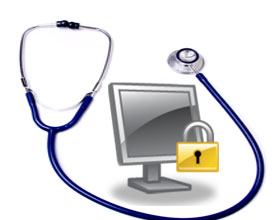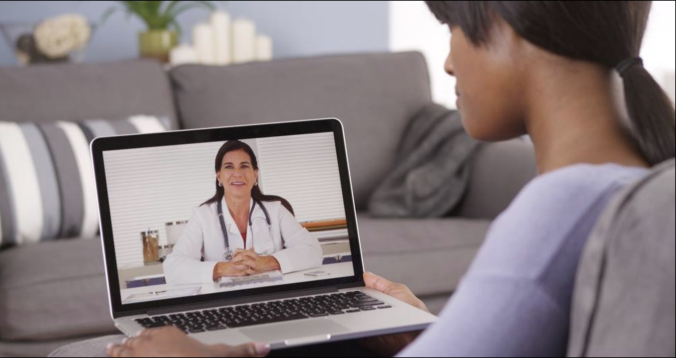A Failed “Trust Fall”

When you are dealing with potential life and death situations in healthcare, trust is incredibly important. As a patient, trusting your provider is, in my opinion, THE most important element of a doctor-patient relationship. You have to feel that your doctor is watching out for your health foremost over any consideration of financial gain, hospital influence, or outside interference. That trust and that relationship is the very essence of quality healthcare. That trust is earned and once lost, almost impossible to regain.
As technology encroaches more and more into healthcare, how important is that trust? Can you gain trust in a healthcare provider you have never met before using a remote solution like telemedicine? When you use a remote connection to treat a urinary tract infection (UTI), would you rather see YOUR provider or will any provider do? At what point is YOUR doctor critical? When is a transactional healthcare relationship ok and when do you need someone you really trust?
A Transactional Health System
Are we building more of a transactional health system? By transactional I mean, I have a straight forward problem and I need an action performed by a provider. I need a retail healthcare transaction. If I need a flu shot, I can go to my primary provider, that clinic’s nurse practitioner, my local drug store, a free clinic, or even the health department. I don’t need an assessment by a trusted professional, I just need the shot I get every fall to prevent the flu. I don’t really care where I get it, I just want it to be quick, convenient, and cheap. That is a healthcare transaction. The quality of the interaction is much less important than the cost and convenience.
Chronic care of a medical condition is less transactional. The quality of the transaction matters. A patient with known coronary heart disease has several conditions that can contribute to their longterm condition. The ability to pick up sometimes very subtle clues is important in longterm health of that patient. Quality care of that kind of patient is based on the identification of symptoms that allows early detection of problems, treatment of related diseases to lower the future risk or a heart attack like diabetes, hypertension, and hyperlipidemia, and assessment (and prevention) of lifestyle factors like smoking, obesity and a sedentary lifestyle. The best clinics have a team approach that involves physicians, nurse practitioners, nurses, dieticians, and even psychologists and exercise physiologists. This is not a transactional relationship. You are forming a chronic care relationship with a team to prevent recurrence of a potentially life-threatening situation like a heart attack. Waiting on the patient to initiate a transaction is not sufficient care in that situation.
Technology and The Healthcare System
The real question for me is can we build a healthcare system that is both transactional as far as cost and convenience are concerned, and still provides quality, trustworthy relationships for serious chronic health problems? I don’t need to come into a provider’s office and wait an hour to see a nurse for a flu shot anymore. We have figured out a mechanism to prevent that. There are many aspects of chronic care medicine that can also be improved by making it more transactional. If I keep up with my weight, HR, blood pressure, and glucose readings at home using quality instruments that are just as accurate as those found in a doctor’s office, do I need to come in and let the office do those same measurements in a situation that is far from my normal? The technology exists (and payment models already exist) for the patient to transmit their basic health data like weight, blood pressure, heart rate, glucose readings, sleep data, exercise data, and even EKG data to the provider securely without a visit to the office. The technology even exists to allow limited examinations using high-definition video and Bluetooth connected otoscopes and stethoscopes that can rival a limited exam in a provider’s office. Can that technology get cheaper and more ubiquitous to allow a consumer of healthcare, access to the devices to allow performance of a limited exam? Yes, it can. It probably will. Do you trust that system and does it break down that critical element of trust with an in-person provider?
So, with the ability to evaluate health data and perform a limited exam remotely, can we create a quality, chronic care system that is transactional when we want and need it to be? I think we are starting that process with Housecall Telemedicine. We are connecting trusted providers with their patients. We are connecting the patient’s collected healthcare data to their providers and presenting it in a way that makes it easy to review and analyze. We are allowing patients to stay at home or at their office for a limited provider visit rather than spend half a day waiting in a doctor’s office. We are making an inconvenient, cumbersome, process of a provider visit more transactional.
Who Do You Trust?
There are levels of trust in answering a patient’s healthcare question. That patient can ask a relative or a friend the question. They can ask “Doctor Google” the question. They can ask a nurse the question, or they can ask their doctor the question. Whose answer do you trust for your health especially with a serious health question? Does the perceived seriousness of the question matter? Where is that nexus between trust and convenience located when it comes to healthcare answers? Can technology bridge that gap or does it get in the way? Those are the questions we have to answer as our healthcare system changes in the 21st century.


 “I can teach you medicine, but I cannot teach you to care” was a frequent saying from a mentor during my residency training. Empathy, the ability to understand and share the feelings of another, is perhaps the most critical component in a doctor. It is also one that is sometimes missing today in many healthcare workers. I would venture that a lack of empathy is not just less in healthcare, but in our society in general. Do you care enough to care?
“I can teach you medicine, but I cannot teach you to care” was a frequent saying from a mentor during my residency training. Empathy, the ability to understand and share the feelings of another, is perhaps the most critical component in a doctor. It is also one that is sometimes missing today in many healthcare workers. I would venture that a lack of empathy is not just less in healthcare, but in our society in general. Do you care enough to care? “Do the right thing even when no one is watching.” That was always one of my father’s axioms. It is a philosophy of being responsible and accountable to your own personal standard and having a standard that is independent of the setting. “The right thing” is something you know in your heart.
“Do the right thing even when no one is watching.” That was always one of my father’s axioms. It is a philosophy of being responsible and accountable to your own personal standard and having a standard that is independent of the setting. “The right thing” is something you know in your heart. My daughter is a senior in high school. She is busy completing her college applications and the most common question is “Why (
My daughter is a senior in high school. She is busy completing her college applications and the most common question is “Why (
You must be logged in to post a comment.